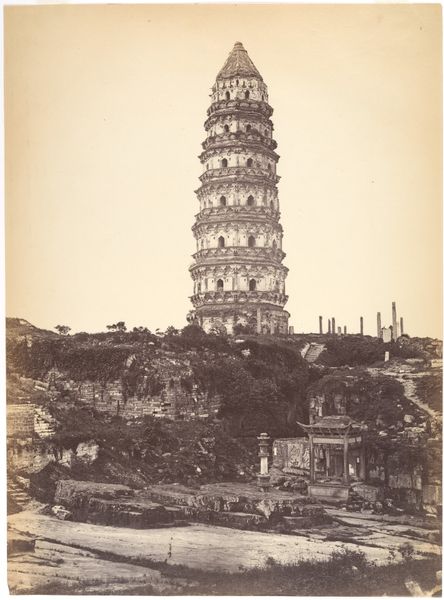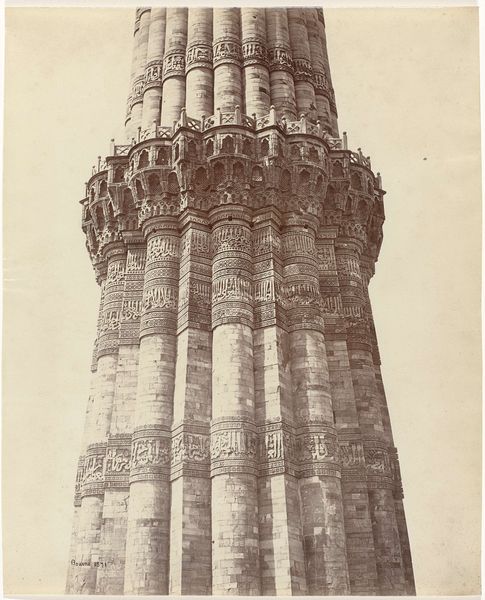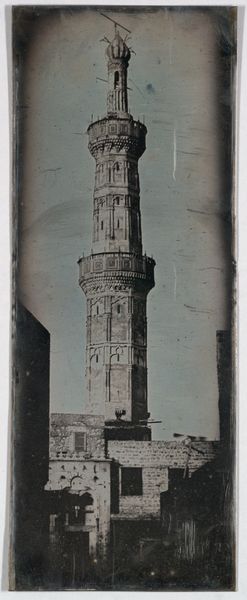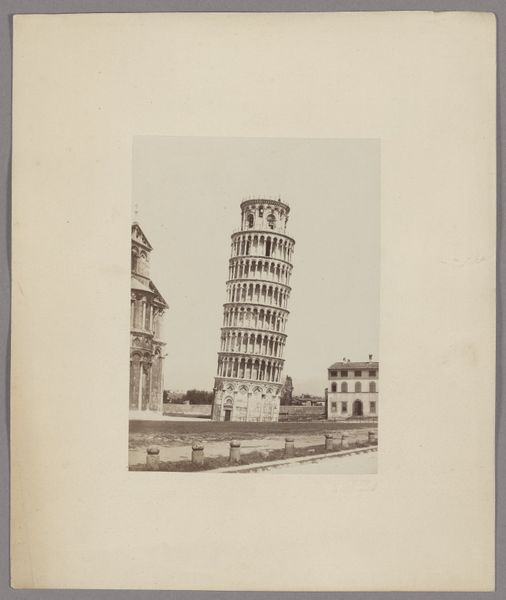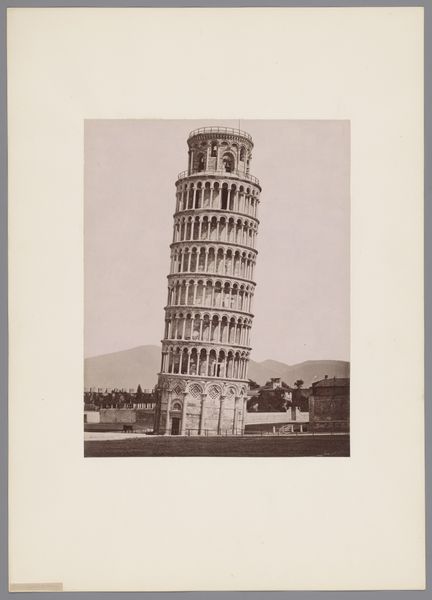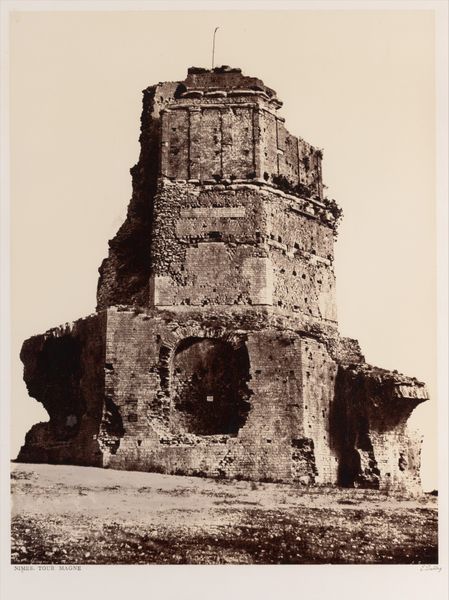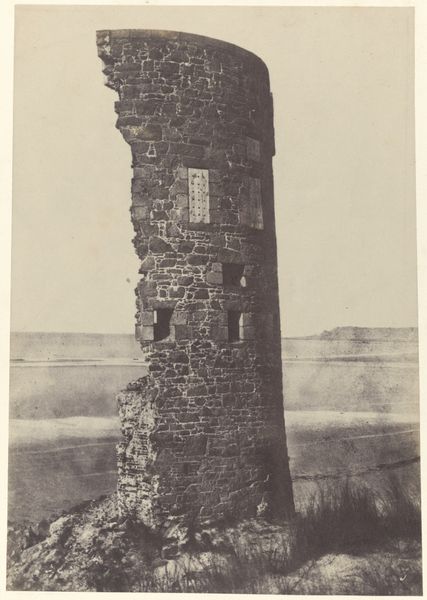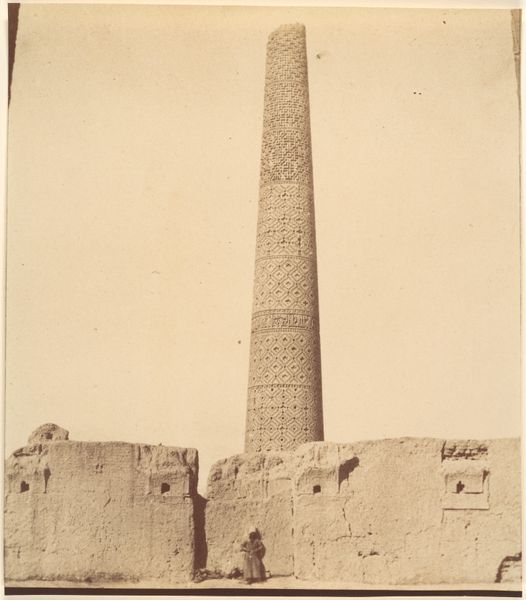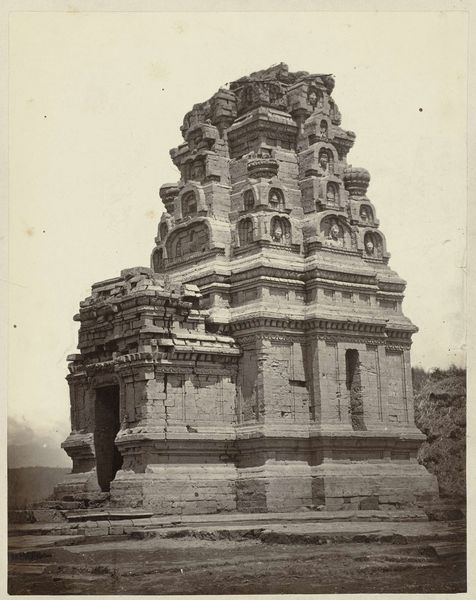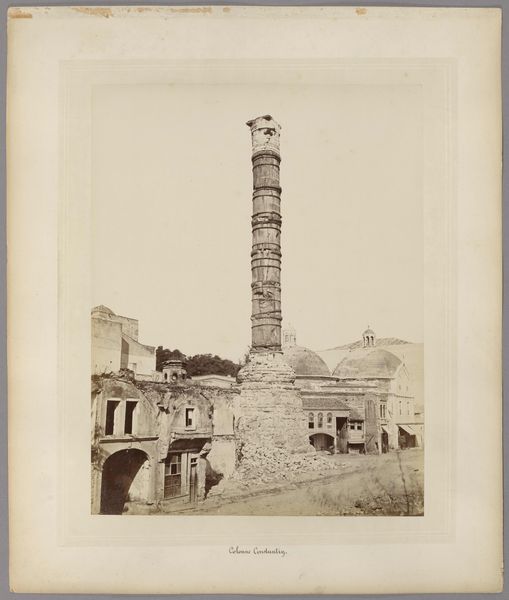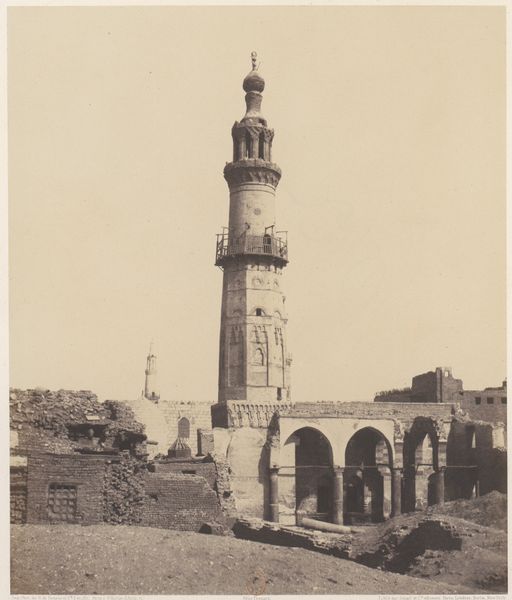
print, photography
#
16_19th-century
# print
#
landscape
#
photography
#
orientalism
Dimensions: 29.6 × 20.7 cm (image, oval); 47.1 × 34.5 cm (album page)
Copyright: Public Domain
Curator: Looking at this oval albumen print, “A Pagoda near Chao-Chowfu,” taken around 1868 by John Thomson, the overwhelming sensation is one of solidity and permanence. What’s your immediate reaction? Editor: Stark beauty, but also a hint of unease. It’s this looming, almost ominous structure dominating the landscape—reminding me of the long shadow colonialism casts on these spaces and the act of representing them. Curator: Indeed. Consider how Thomson frames the pagoda: each distinct level is articulated with careful precision, creating a sense of ascending harmony. The subdued tones of the albumen print enhance the structural integrity. Editor: Yet, the very act of photographing it through a Western lens brings forth questions. Thomson, a Scottish photographer, captured this during a time of immense power imbalance. This pagoda becomes, in a sense, a trophy or a symbol of exotic conquest, whether intentional or not. How can we reconcile that tension? Curator: By recognizing that tensions are intrinsic to the work. Notice the way Thomson utilizes light—it sculpts the pagoda, emphasizing its geometric form and the subtle variations in texture. The architecture itself becomes the subject. It adheres to specific proportional relationships. Editor: But we can't ignore the context! Think of the role pagodas play in spiritual life and local identity, juxtaposed against the photographer's imperial gaze. This isn't merely a neutral document; it is entangled within a complicated web of power dynamics and orientalist perspectives. Curator: I see your point, but let's not diminish Thomson’s craftsmanship. His manipulation of light, composition, and even the choice of vantage point all contribute to the creation of an iconic image. These visual strategies are quite effective. Editor: Agreed, and exploring how different interpretations can co-exist allows us to address a broader discourse. Thank you. Curator: Absolutely. It reminds us that images from the past speak differently across generations and that we must continue listening with open minds.
Comments
No comments
Be the first to comment and join the conversation on the ultimate creative platform.
